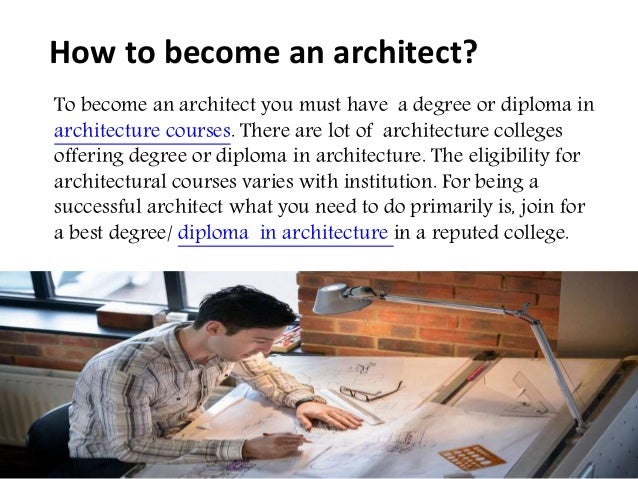Introduction
Aspiring architects, embark on an inspiring odyssey of design, creativity, and problem-solving. The path to becoming a licensed architect is a multifaceted endeavor, requiring dedication, critical thinking, and a passion for shaping the built environment. In this comprehensive guide, we delve into the intricacies of an architectural education, exploring the duration and milestones you’ll encounter along this rewarding journey.

Image: bestaccreditedcolleges.org
Navigating the Architectural Education Landscape
Typically, the path to becoming a licensed architect in the United States entails completing a three-tiered educational process:
- Bachelor of Architecture (B.Arch) or Bachelor of Science in Architecture Degree (B.S.Arch): This four-year undergraduate program provides a solid foundation in design principles, architectural theory, and the technical aspects of architecture.
- Master of Architecture (M.Arch): Most states require a two or three-year graduate degree to obtain architectural licensure. This advanced degree delves deeper into design theory, research, and the complexities of architectural practice.
- Internship Experience: Concurrent with or following their M.Arch degree, aspiring architects typically complete an internship under the guidance of licensed architects. This practical training allows them to hone their skills and gain invaluable hands-on experience.
The National Architectural Accrediting Board (NAAB) plays a crucial role in ensuring the quality of architectural education programs. Look for NAAB-accredited programs to guarantee that your education meets the rigorous standards required for licensure.
Delving into the Duration of an Architecture Degree
The duration of your architectural education depends on your chosen path:
- B.Arch Degree: Four years
- B.S.Arch Degree + M.Arch Degree: Two to three years for the B.S.Arch degree, followed by two or three years for the M.Arch degree
For those who hold degrees in other disciplines, obtaining an M.Arch through an NAAB-accredited program is typically required. The duration of such a master’s program can vary from one to three years, contingent upon the applicant’s background and the specific program’s requirements.
Expert Insights and Practical Guidance
“The journey to becoming an architect is an exceptional fusion of creativity, technical know-how, and a profound commitment to the built environment,” remarks renowned architect Frank Gehry. ” Along the way, you’ll not only acquire invaluable skills but also develop a unique perspective that empowers you to shape the world.”
To enhance your architectural education, consider these practical tips:
- Immerse yourself in design: Engage in creative projects outside of coursework, challenge yourself with design competitions, and seek opportunities for hands-on experiences.
- Seek mentorship: Establish connections with experienced architects who can provide guidance, share valuable insights, and inspire your professional growth.
- Stay abreast of evolving technologies: The architectural landscape is constantly evolving with the advent of new technologies. Embracing these advancements and staying up-to-date with the latest software, materials, and construction techniques will give you a competitive edge.
- Engage with diverse perspectives: Architecture is a collaborative field that draws upon a wide range of perspectives. Seek opportunities to interact with fellow students, professionals from other disciplines, and the community at large to expand your understanding.

Image: www.slideshare.net
How Long Does It Take To Get An Architect Degree
Conclusion
Embarking on an architectural education unlocks a world of creativity, problem-solving, and the opportunity to make a lasting impact on the built environment. By understanding the duration, milestones, and expert insights associated with the journey, you can approach your studies with confidence and pave the way for a fulfilling career as a licensed architect, shaping the spaces where we live, work, and thrive. Remember, the path to architectural excellence is a dynamic and rewarding one, filled with challenges, inspiration, and the profound satisfaction of contributing to the creation of a better built environment.